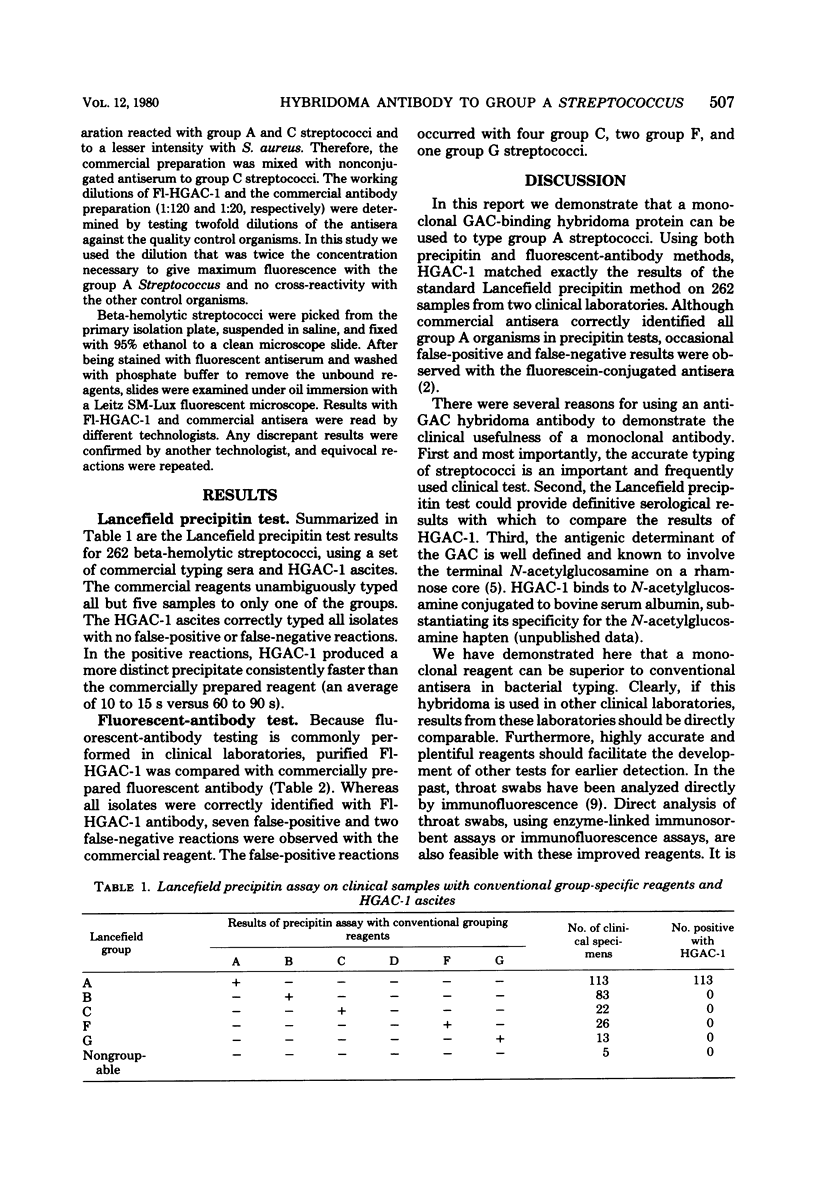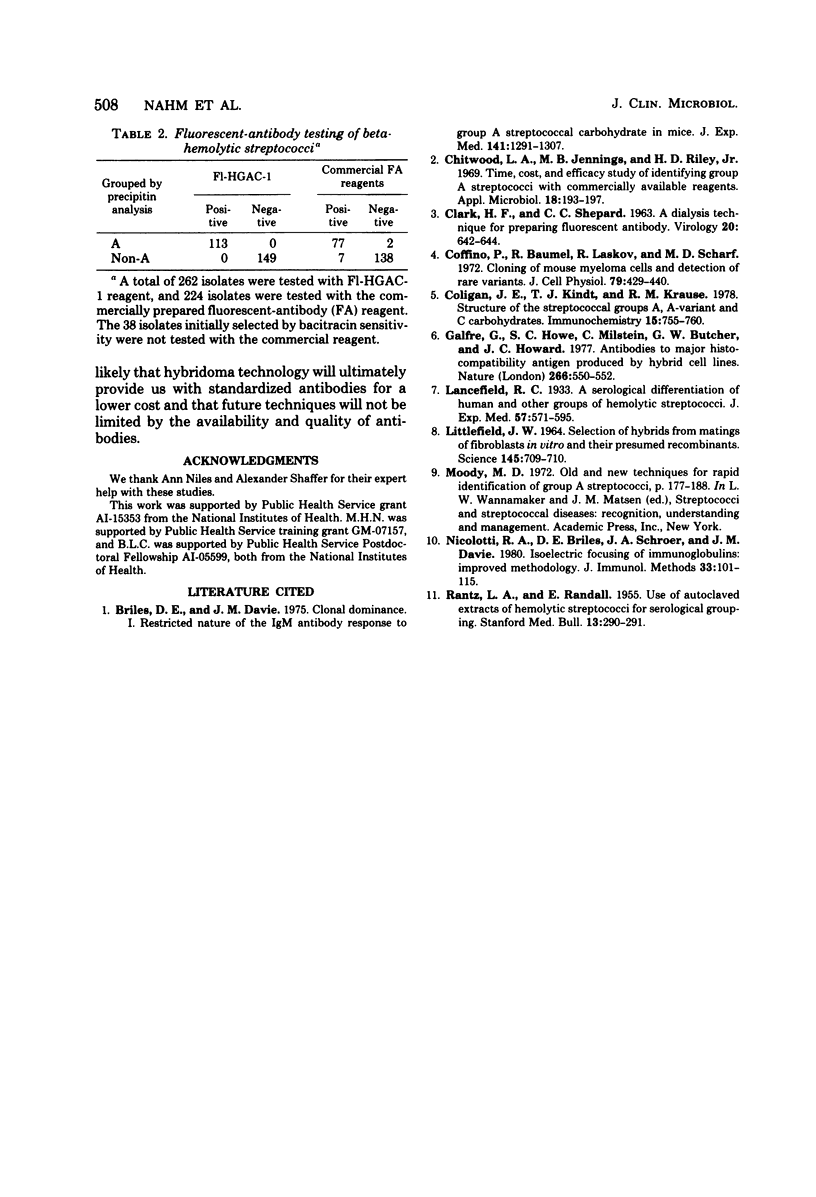Abstract
Monoclonal mouse antibody to streptococcal group A carbohydrate was evaluated in diagnostic microbiology laboratory. A total of 262 isolates of beta-hemolytic streptococci were classified with commercial reagents and the monoclonal antibody to group A carbohydrate by using immunofluorescence and Lancefield precipitin tests. Both nonoclonal and commercial antibodies were identifically reactive by the precipitin test but significantly different by immunofluroescence. Monoclonal antibody gave the same reactivity as seen in the precipitin test, but commercial antibodies gave both false-positive and false-negative results. These results suggest that monoclonal reagents may be superior to conventional antisera.
Full text
PDF


Selected References
These references are in PubMed. This may not be the complete list of references from this article.
- Briles D. E., Davie J. M. Clonal dominance. I. Restricted nature of the IgM antibody response to group A streptococcal carbohydrate in mice. J Exp Med. 1975 Jun 1;141(6):1291–1307. doi: 10.1084/jem.141.6.1291. [DOI] [PMC free article] [PubMed] [Google Scholar]
- CLARK H. F., SHEPARD C. C. A DIALYSIS TECHNIQUE FOR PREPARING FLUORESCENT ANTIBODY. Virology. 1963 Aug;20:642–644. doi: 10.1016/0042-6822(63)90292-7. [DOI] [PubMed] [Google Scholar]
- Chitwood L. A., Jennings M. B., Riley H. D., Jr Time, cost, and efficacy study of identifying group A streptococci with commercially available reagents. Appl Microbiol. 1969 Aug;18(2):193–197. doi: 10.1128/am.18.2.193-197.1969. [DOI] [PMC free article] [PubMed] [Google Scholar]
- Coffino P., Baumal R., Laskov R., Scharff M. D. Cloning of mouse myeloma cells and detection of rare variants. J Cell Physiol. 1972 Jun;79(3):429–440. doi: 10.1002/jcp.1040790313. [DOI] [PubMed] [Google Scholar]
- Coligan J. E., Kindt T. J., Krause R. M. Structure of the streptococcal groups A, A-variant and C carbohydrates. Immunochemistry. 1978 Nov;15(10-11):755–760. doi: 10.1016/0161-5890(78)90105-0. [DOI] [PubMed] [Google Scholar]
- Galfre G., Howe S. C., Milstein C., Butcher G. W., Howard J. C. Antibodies to major histocompatibility antigens produced by hybrid cell lines. Nature. 1977 Apr 7;266(5602):550–552. doi: 10.1038/266550a0. [DOI] [PubMed] [Google Scholar]
- LITTLEFIELD J. W. SELECTION OF HYBRIDS FROM MATINGS OF FIBROBLASTS IN VITRO AND THEIR PRESUMED RECOMBINANTS. Science. 1964 Aug 14;145(3633):709–710. doi: 10.1126/science.145.3633.709. [DOI] [PubMed] [Google Scholar]
- Nicolotti R. A., Briles D. E., Schroer J. A., Davie J. M. Isoelectric focusing of immunoglobulins: improved methodology. J Immunol Methods. 1980;33(2):101–115. doi: 10.1016/s0022-1759(80)80001-9. [DOI] [PubMed] [Google Scholar]
- RANTZ L. A., RANDALL E. Use of autoclaved extracts of hemolytic streptococci for serological grouping. Stanford Med Bull. 1955 May;13(2):290–291. [PubMed] [Google Scholar]


